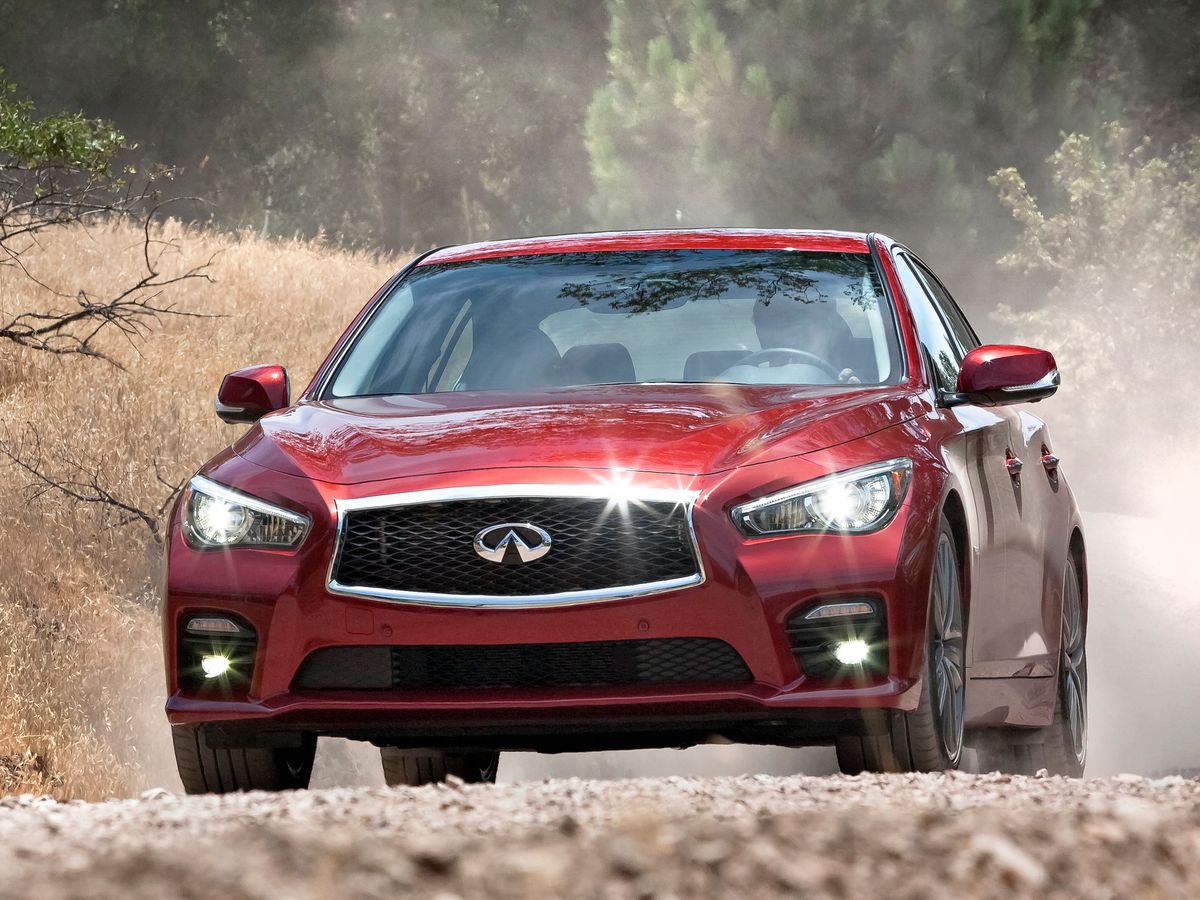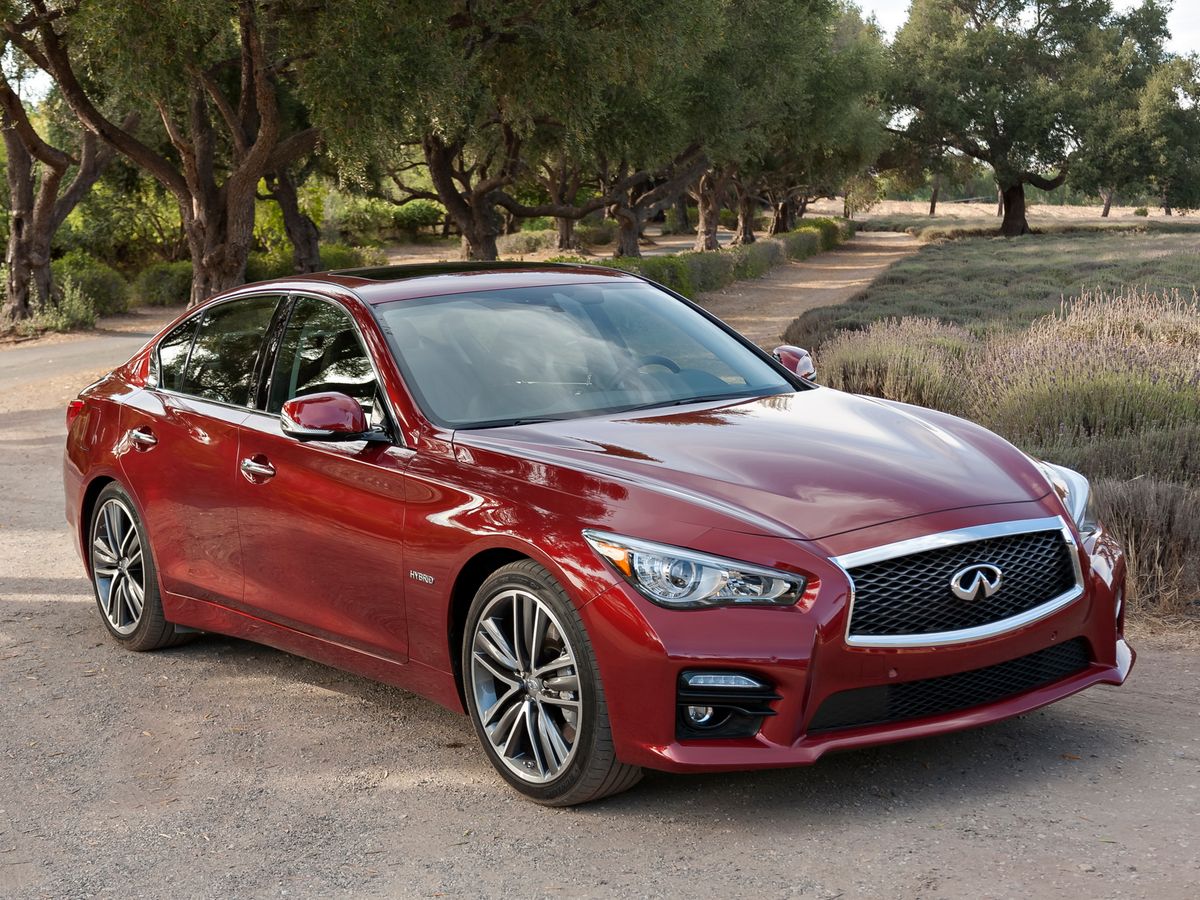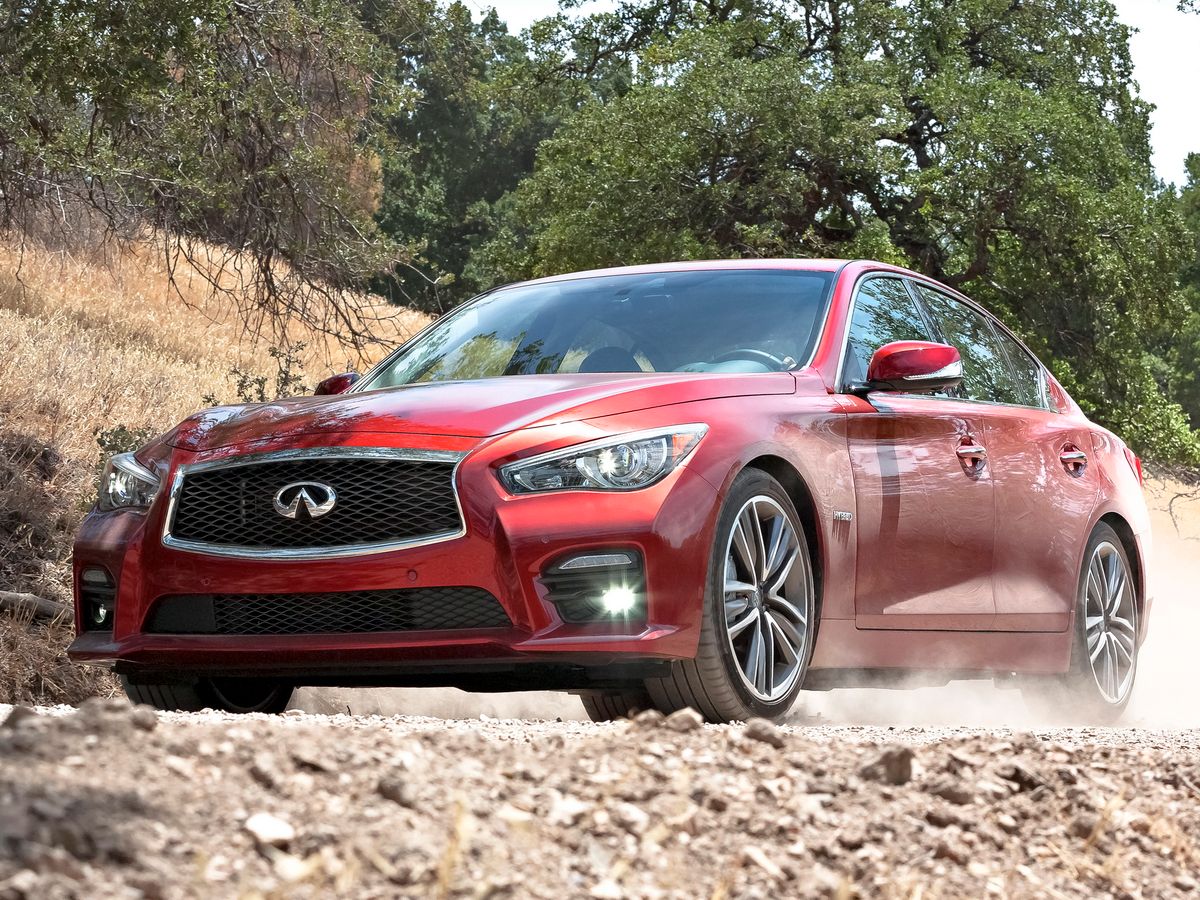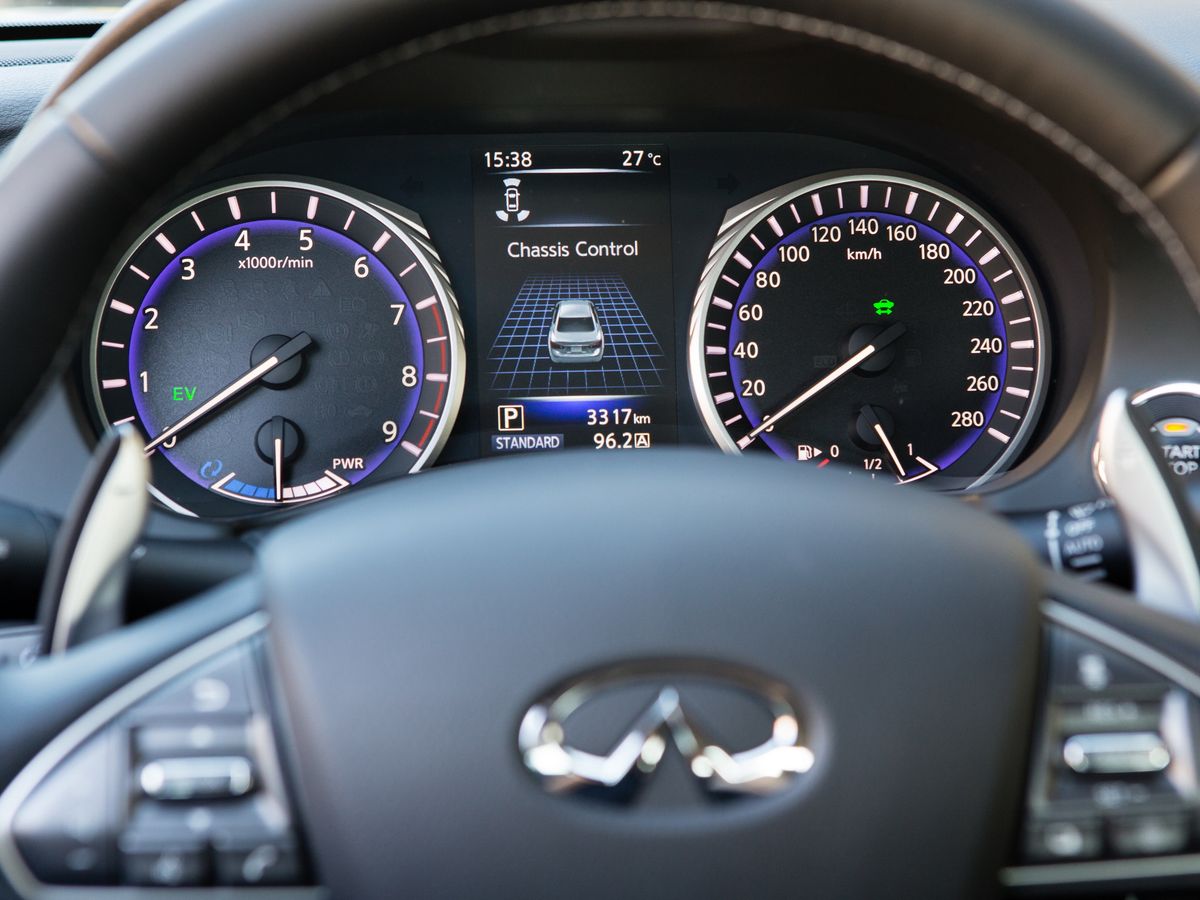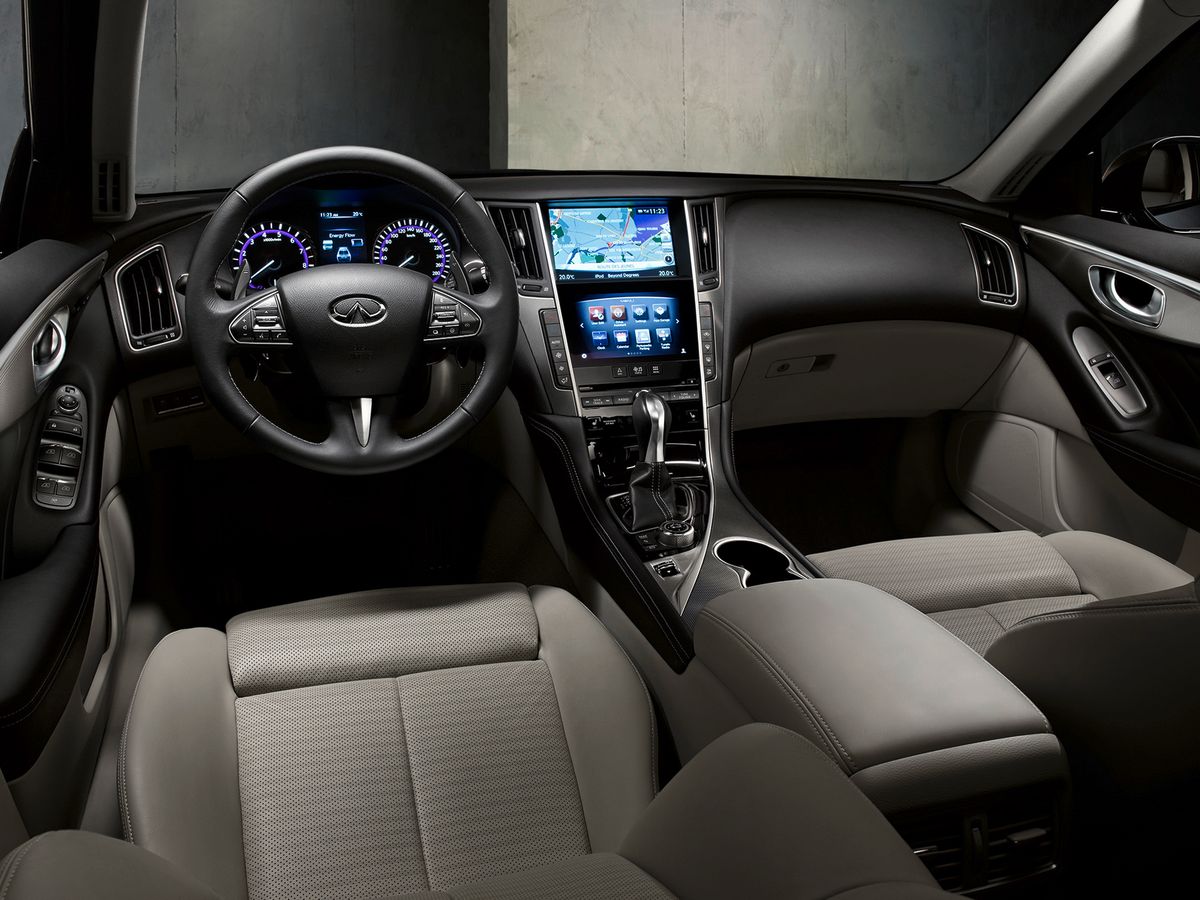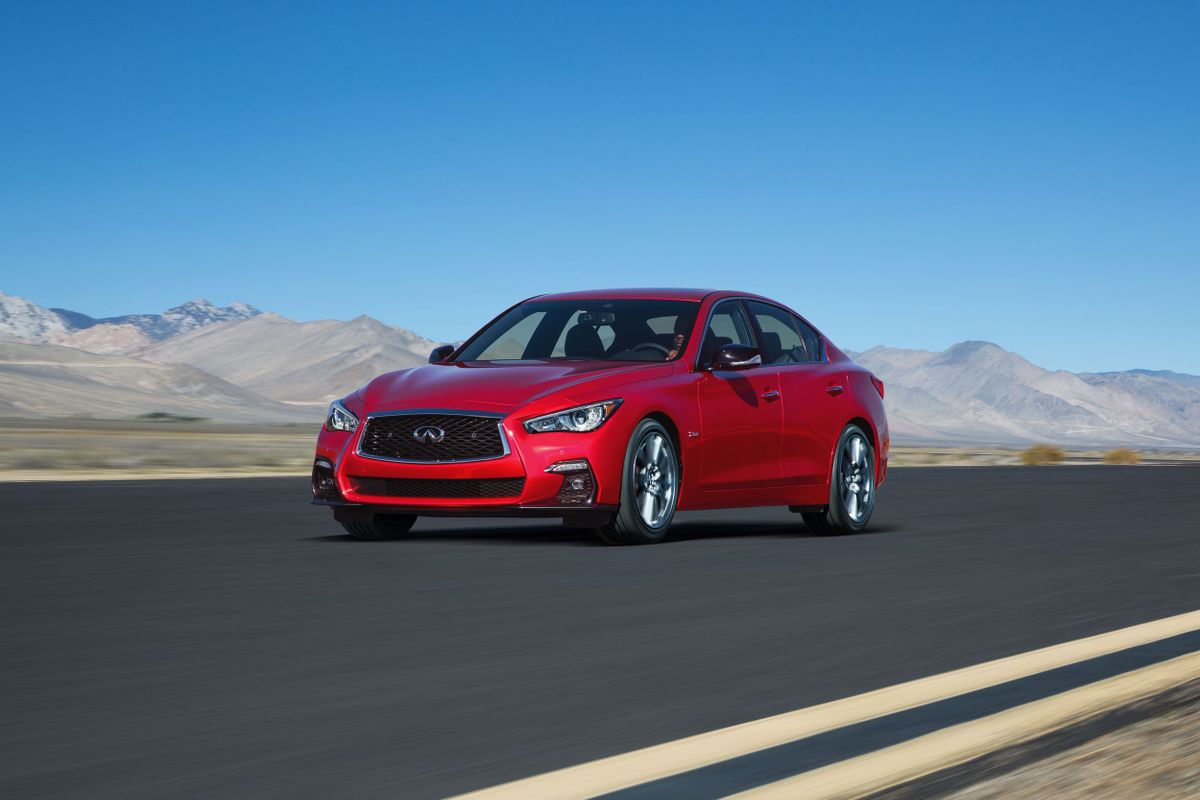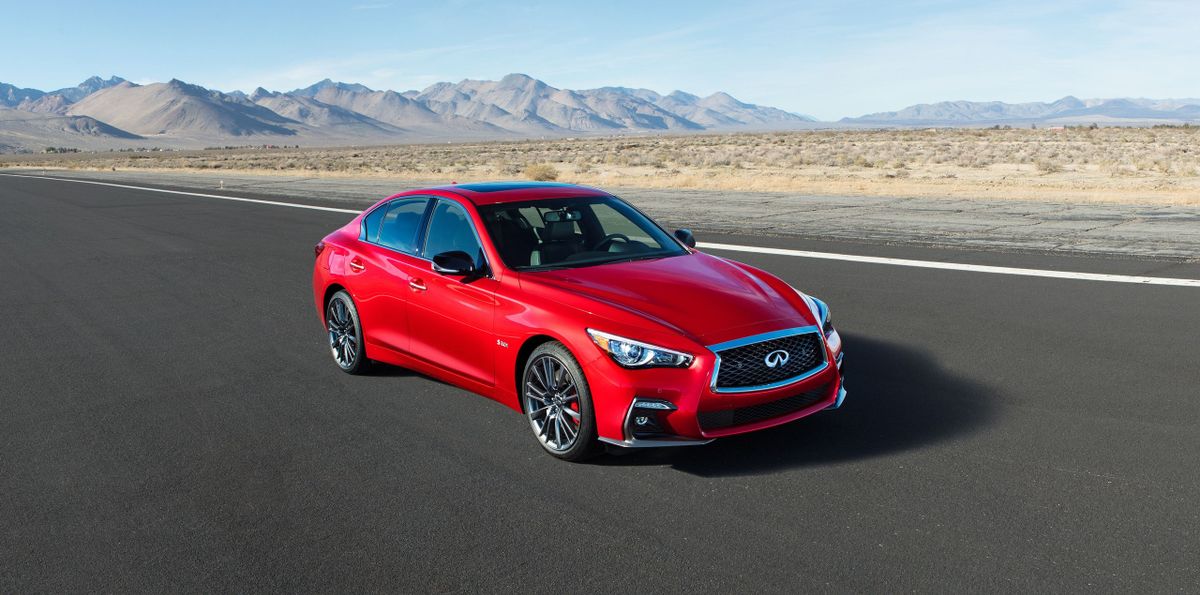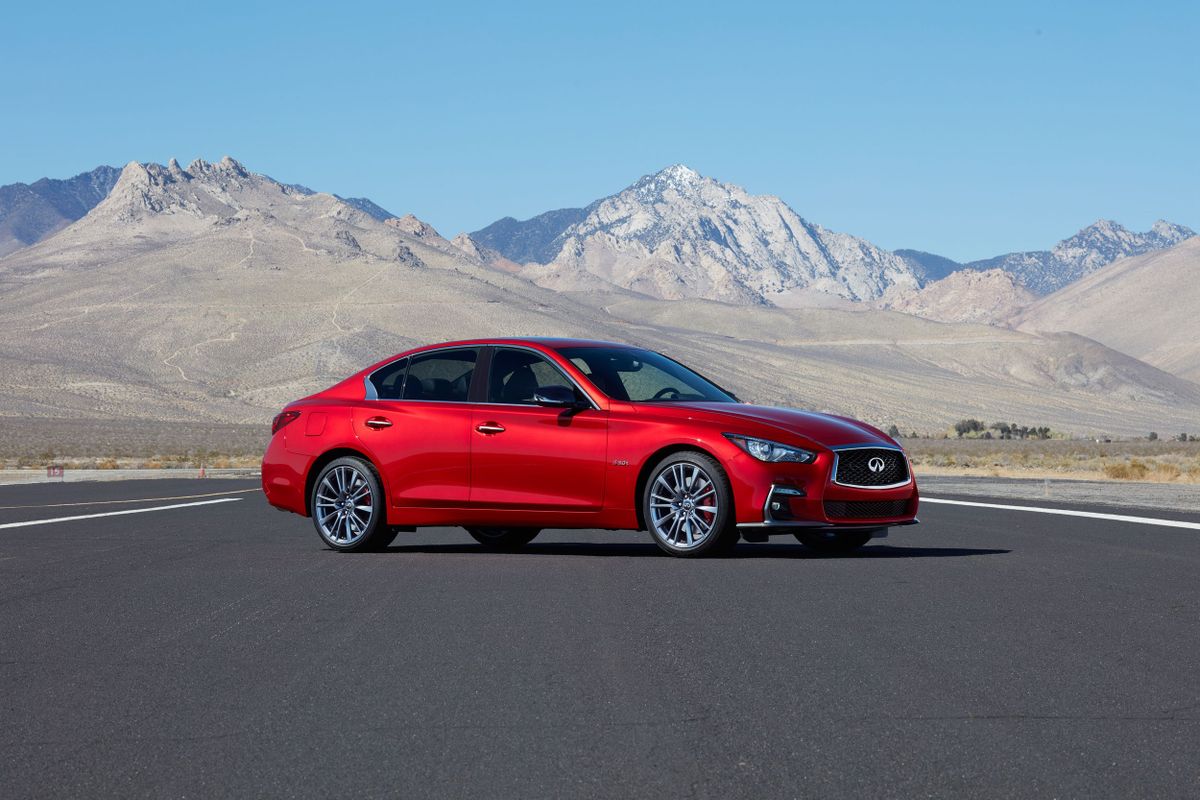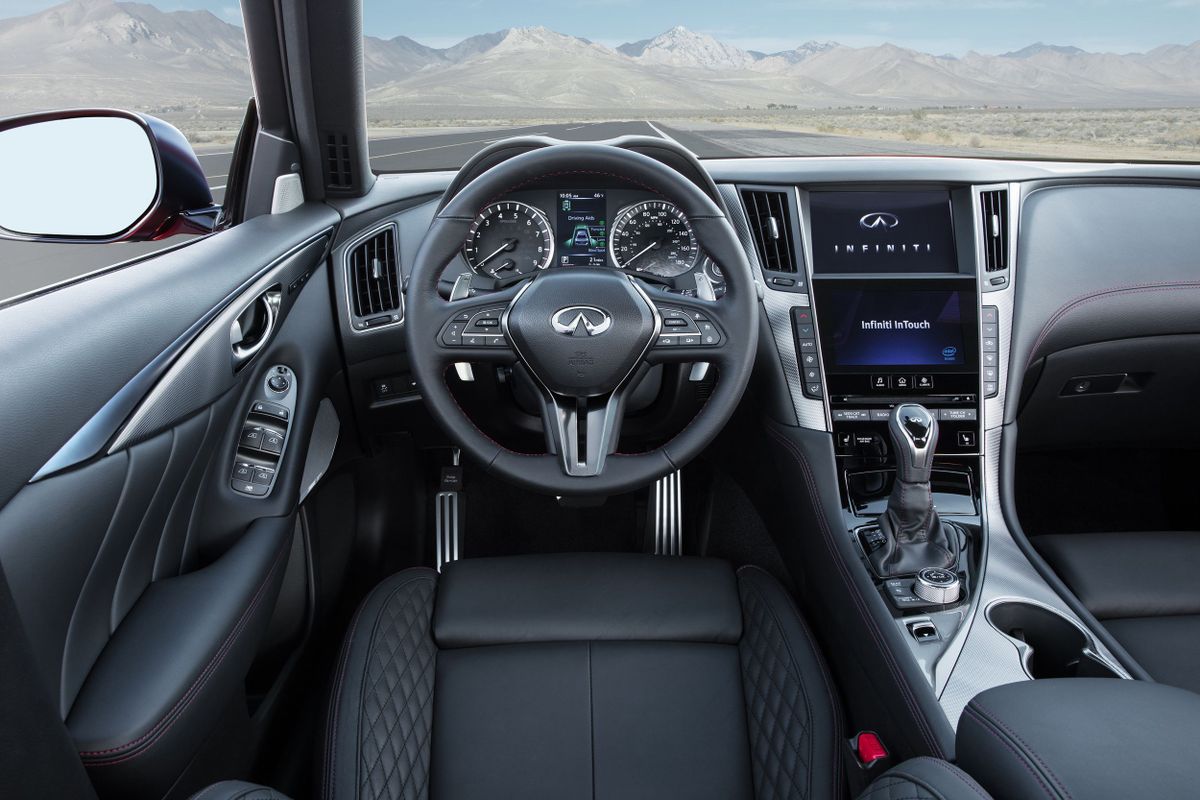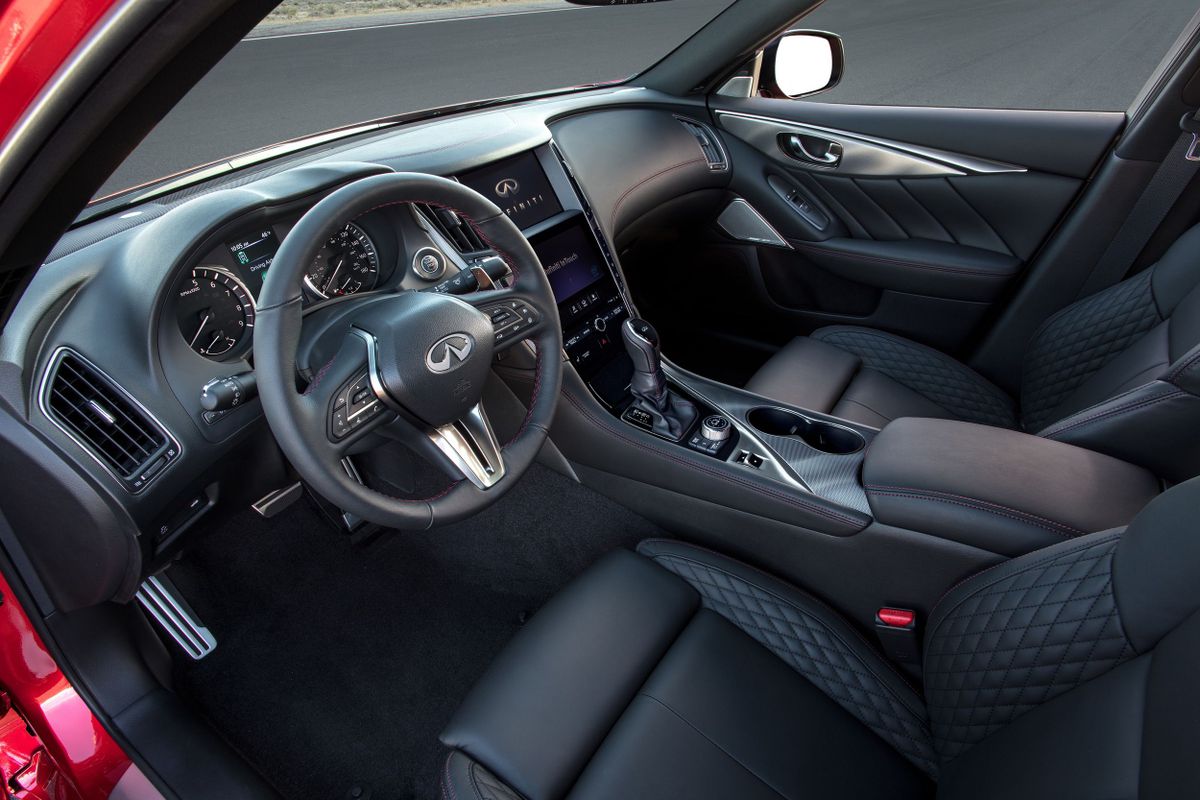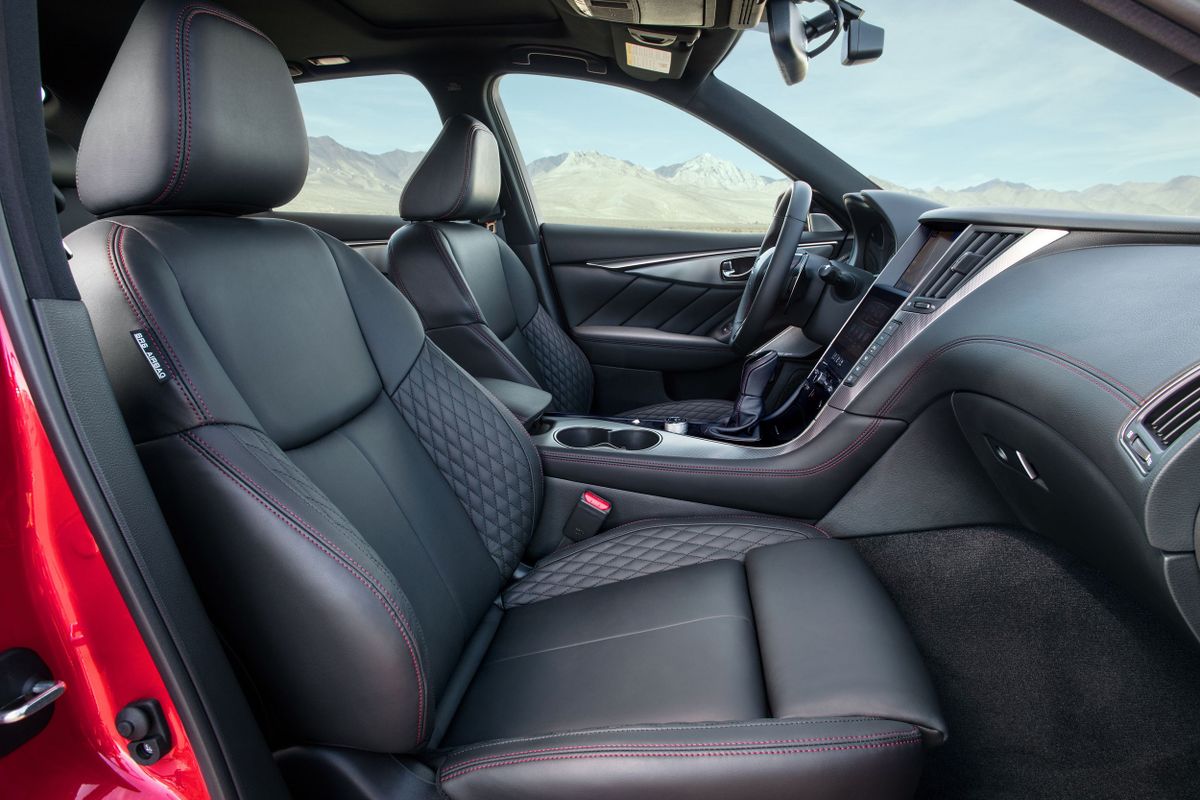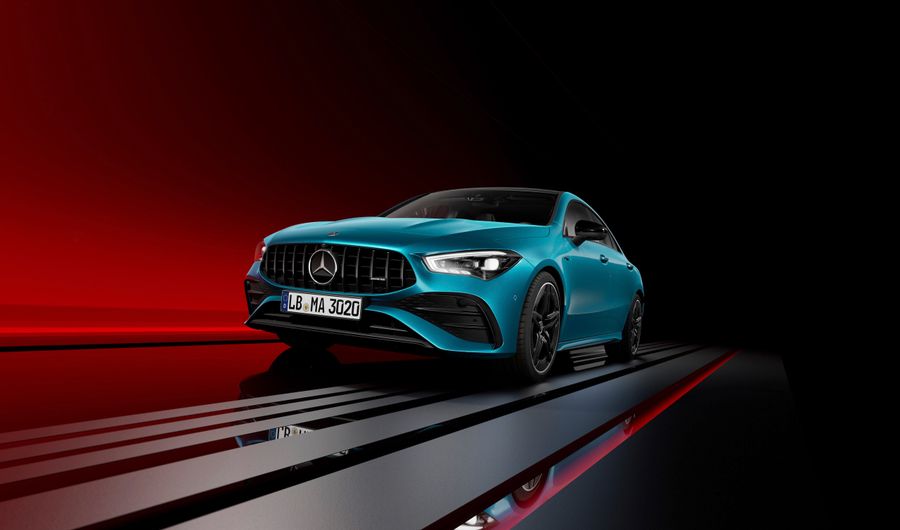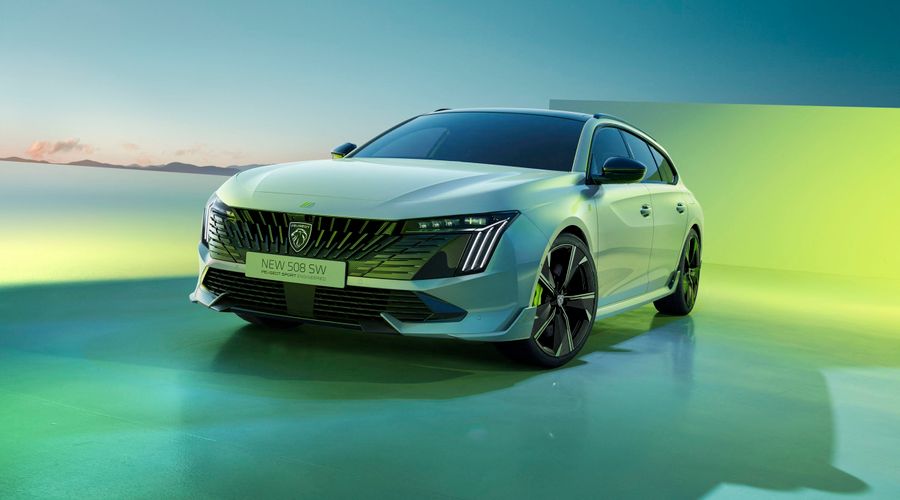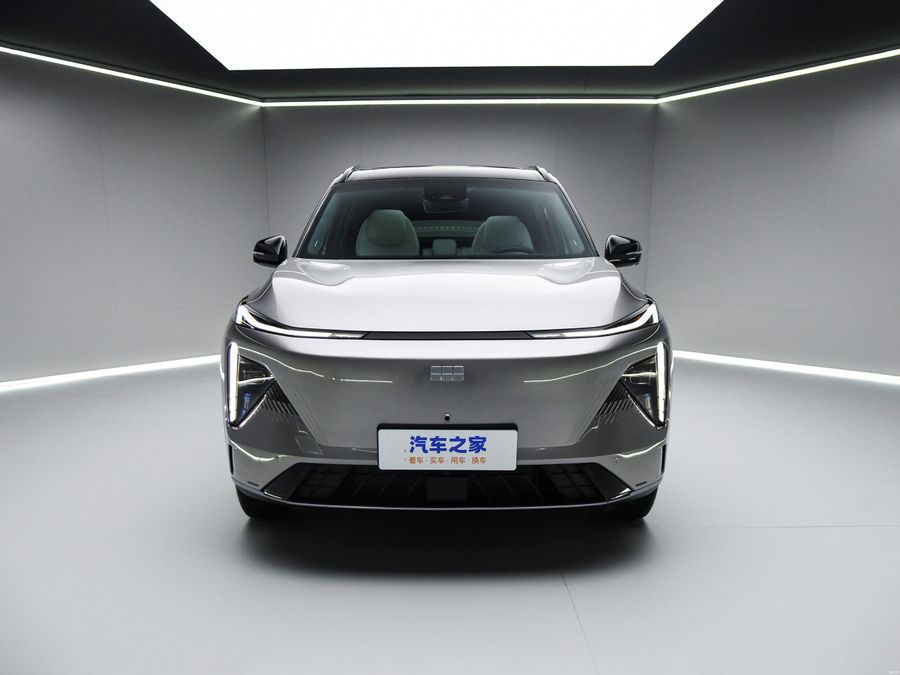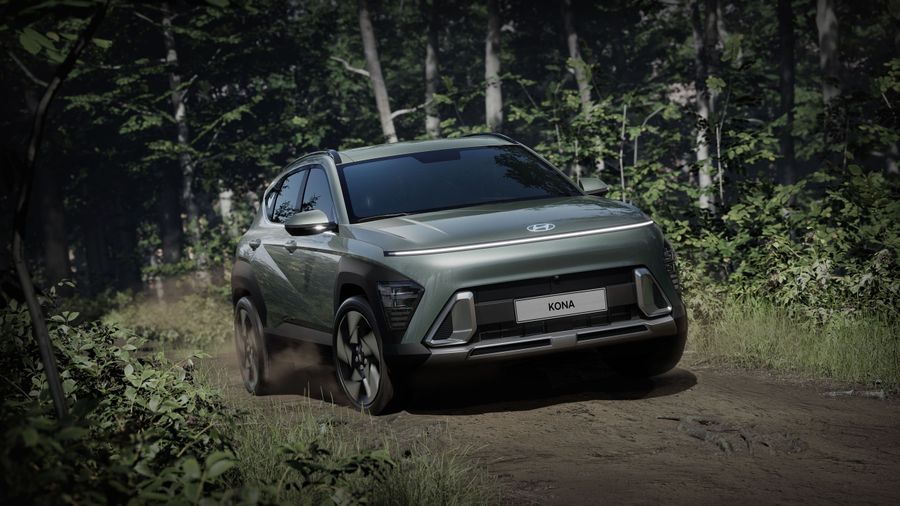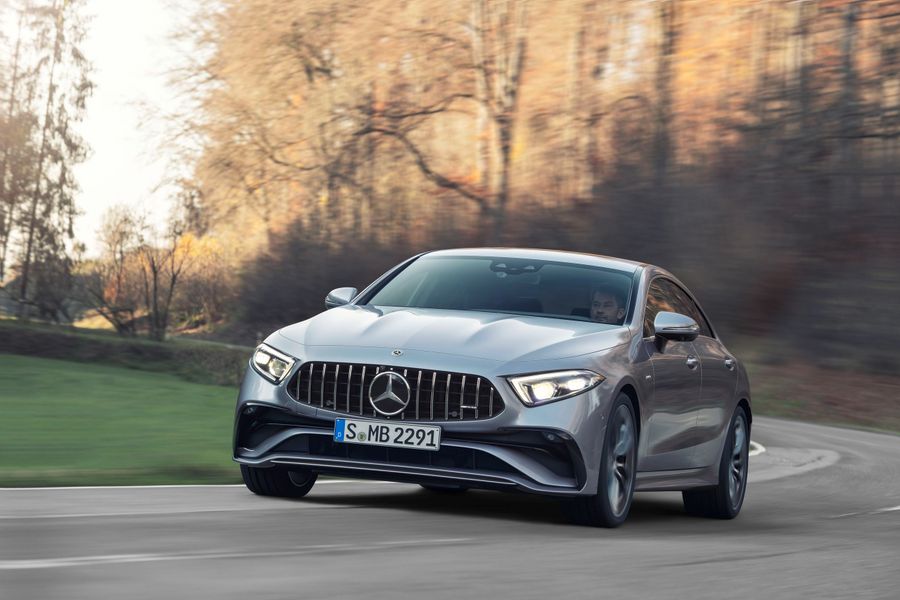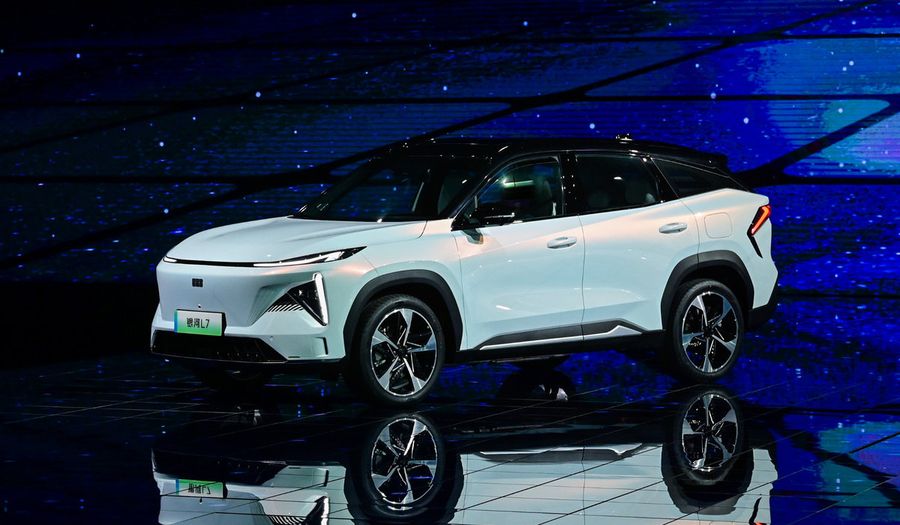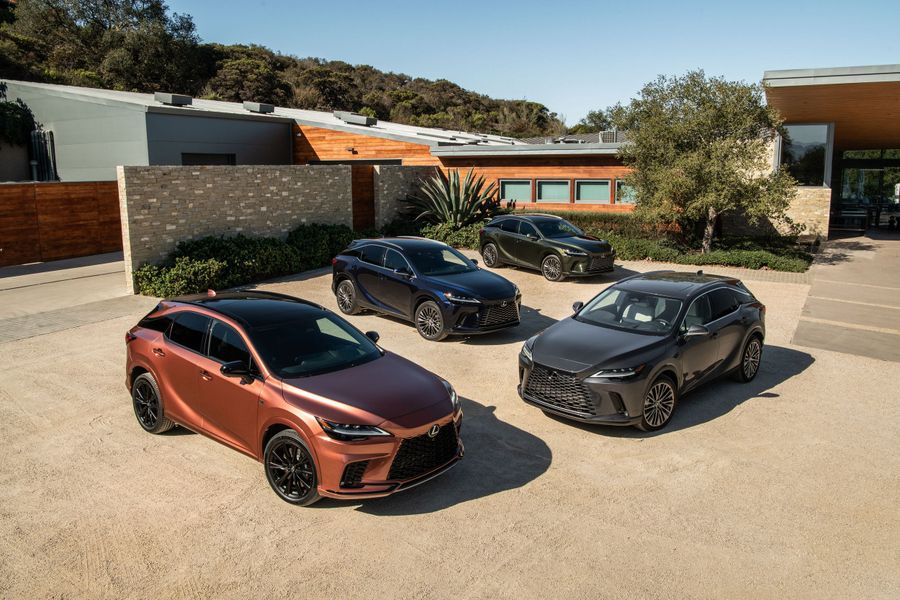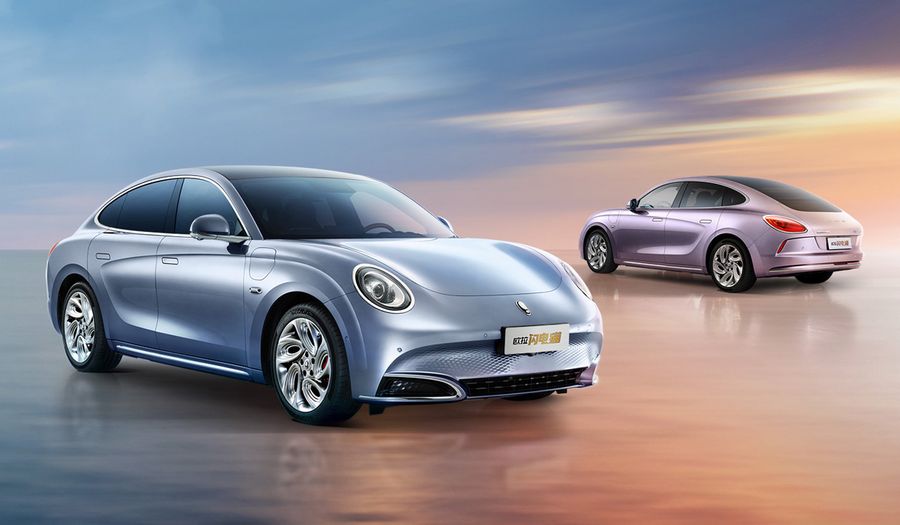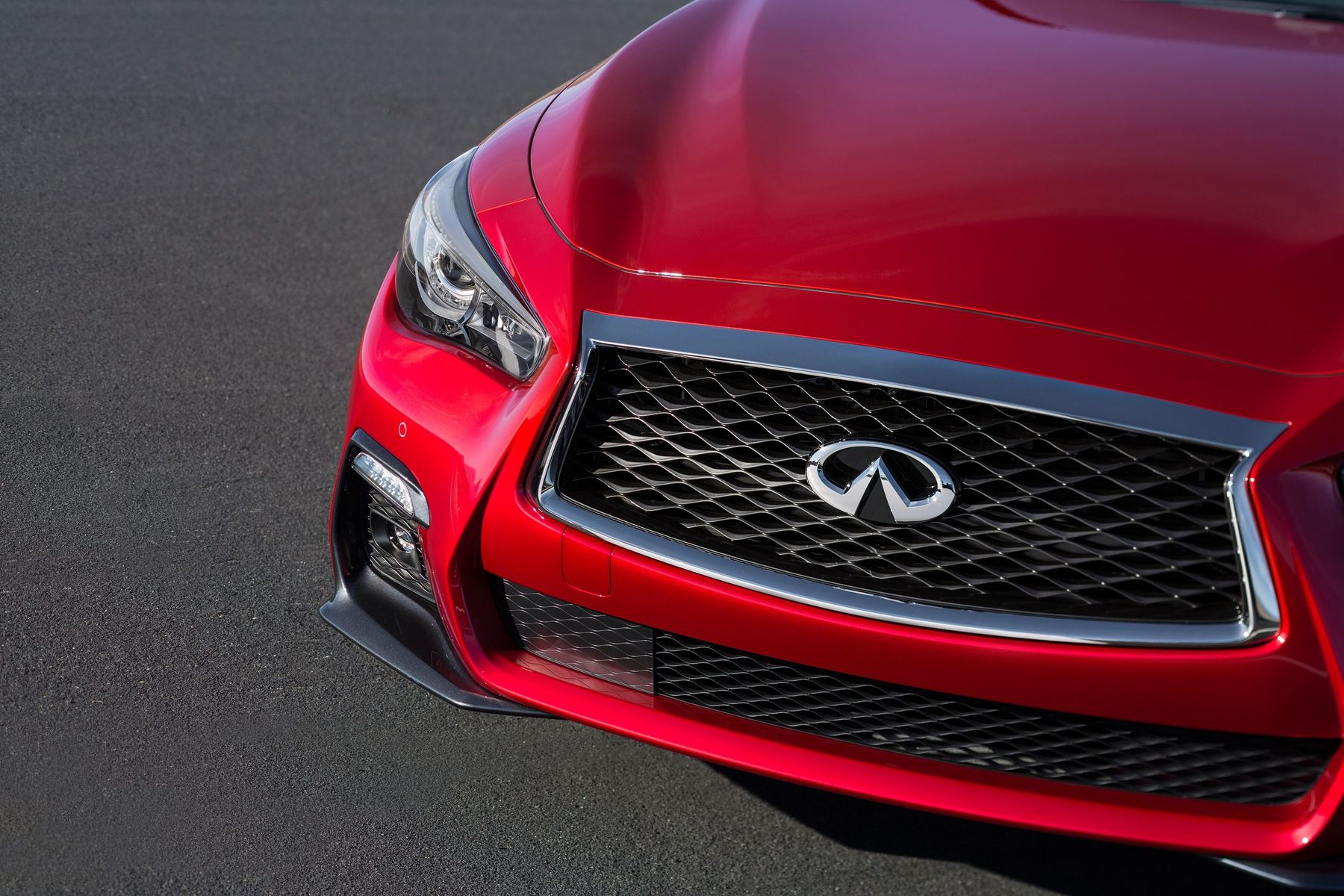
Infiniti Q50. World skyline
The Infiniti Q50 is a D-segment luxury sedan manufactured since 2014 under the Infiniti brand. Infiniti is Nissan’s luxury division that competes with Lexus and other similar brands. Infiniti builds its vehicles based on Nissan models. Thus, the Infiniti Q50 is known as the Nissan Skyline V37 in Japan. The car lives up to its name, as the Q50 offers an incredible driving experience, making you just want to drive it along the road that goes far beyond the horizon.
The brand is known for its SUVs, crossovers and luxury sedans. Despite its solid dimensions (its body is 4,790 mm long), the Infiniti Q50 is considered a compact luxury car. Following in the footsteps of the Infiniti G, the Q50 debuted in 2013 and was Infiniti’s first hybrid car. The Q50 Hybrid received a 3.5-liter gasoline engine, as well as rear-wheel drive and all-wheel drive versions. Its production was terminated due to low demand in 2019. The sedan is not available in Israel. However, until recently Israeli buyers could purchase the first generation of the 2015 Infiniti Q30 hatchback. In the summer of 2019, the Infiniti Q30 was discontinued due to low demand.
The new Infiniti Q30 was supplied to Israel in two front-wheel drive versions. The entry-level one was equipped with a 1.6-liter turbocharged gasoline engine with an output of 156 hp, whereas the Sport version featured a 2-liter engine with an output of 211 hp. Both were coupled with a 7-speed robotic gearbox. The first engine was a little more fuel-efficient, with the average fuel consumption being 6.5 liters per 100 km, while the second engine was more dynamic and could accelerate the hatchback to 235 km/h.
The first generation
The Infiniti Q50 is based on the 2009 Infiniti Essence concept car and the 2011 production Infiniti M. The sedan was unveiled at the 2013 North American International Auto Show, and in the third quarter of the same year, the new car went on sale in North America, whereas European dealers received it in the fourth quarter of 2013. The mid-size Q50 sedan was known as a natural gadget on wheels: it received an ‘electronic’ steering wheel (with no mechanical connection between the steering wheel and the wheels), a hybrid engine and a bunch of other technological gadgets. And Sebastian Vettel himself participated in adjusting the driving performance! In pursuit of progress, Nissan has not forgotten that driving should be fun. The new Infiniti Q50 incorporates many advanced technologies, but has not ceased to be just a good car that makes drivers happy. Perhaps the credit goes to the four-time Formula 1 World Champion from whom the Q50 has inherited a victorious spirit.
The Q50 was supplied to the USA and Canada with a 3.7-liter V6 engine (333 hp) and a 7-speed automatic transmission. There was also a hybrid version with a power system based on a 3.5-liter engine (364 hp). Both variants were offered with both rear-wheel drive and intelligent all-wheel drive. The car for Europe was equipped with a 2.2-liter diesel engine (6-speed manual transmission) and a hybrid system. In 2014, a 2-liter engine (211 hp), a 7-speed automatic transmission and rear-wheel drive appeared. In the Middle East, the cars went on sale in the spring of 2014 with a 3.7-liter V6 engine and hybrid versions, both with rear-wheel drive. In China, there was a longer Q50L with the wheelbase 48mm longer than that of the regular Q50, which gave more legroom for rear passengers. It was equipped with a 2-liter turbocharged engine and a 7-speed automatic transmission. The car was the epitome of true sports luxury.
The new Infiniti Q50 incorporates many advanced technologies, and the four-time Formula 1 World Champion Sebastian Vettel himself participated in adjusting the driving performance
The new Infiniti Q50 turned out to be very dynamic: a model with a 3.7-liter engine and four-wheel drive accelerated to 100 km/h in 5.8 seconds, a hybrid version did it in 5.1 seconds, an all-wheel drive hybrid version could accelerate in 5.4 seconds, and even a version with a 2.2-liter diesel engine accelerated in 8.7-8.5 seconds. At the end of 2015, the VR30 engine with two turbochargers and intercoolers, which developed 305 hp and 400 Nm, was added to the range. The boosted version of this engine with 405 hp and 475 Nm was installed on the sports versions of the model.
There was also a sad fact in the biography of the Q50: in 2016, the Infiniti Q50 sedans equipped with DAS (Direct Adaptive Steering) electronic steering were withdrawn. It turned out that the system started malfunctioning at low air temperatures.
2017 restyling
In 2017, a restyled Infiniti Q50 was presented at the Geneva Motor Show. The restyled sedan features new bumpers, a slightly change radiator grille, and new lights with side lights in the shape of the letter L.
The 2020/2021 Infiniti Q50 comes with the ProPilot system, which is capable of controlling the car on the highway. It is activated at speeds over 70 km/h and allows you to drive only within its lane. The powertrains changed a year ago. The top-end version is now equipped with a 3.0-liter biturbo V6 engine (405 hp). Different markets alos offer 2.0-liter turbocharged 4-cylinder engines (208 hp), 2.1-liter diesel engines (168 hp) and the same hybrid system (with a total output of 360 hp). The modernized car appeared almost simultaneously in all countries in the second quarter of this year.


